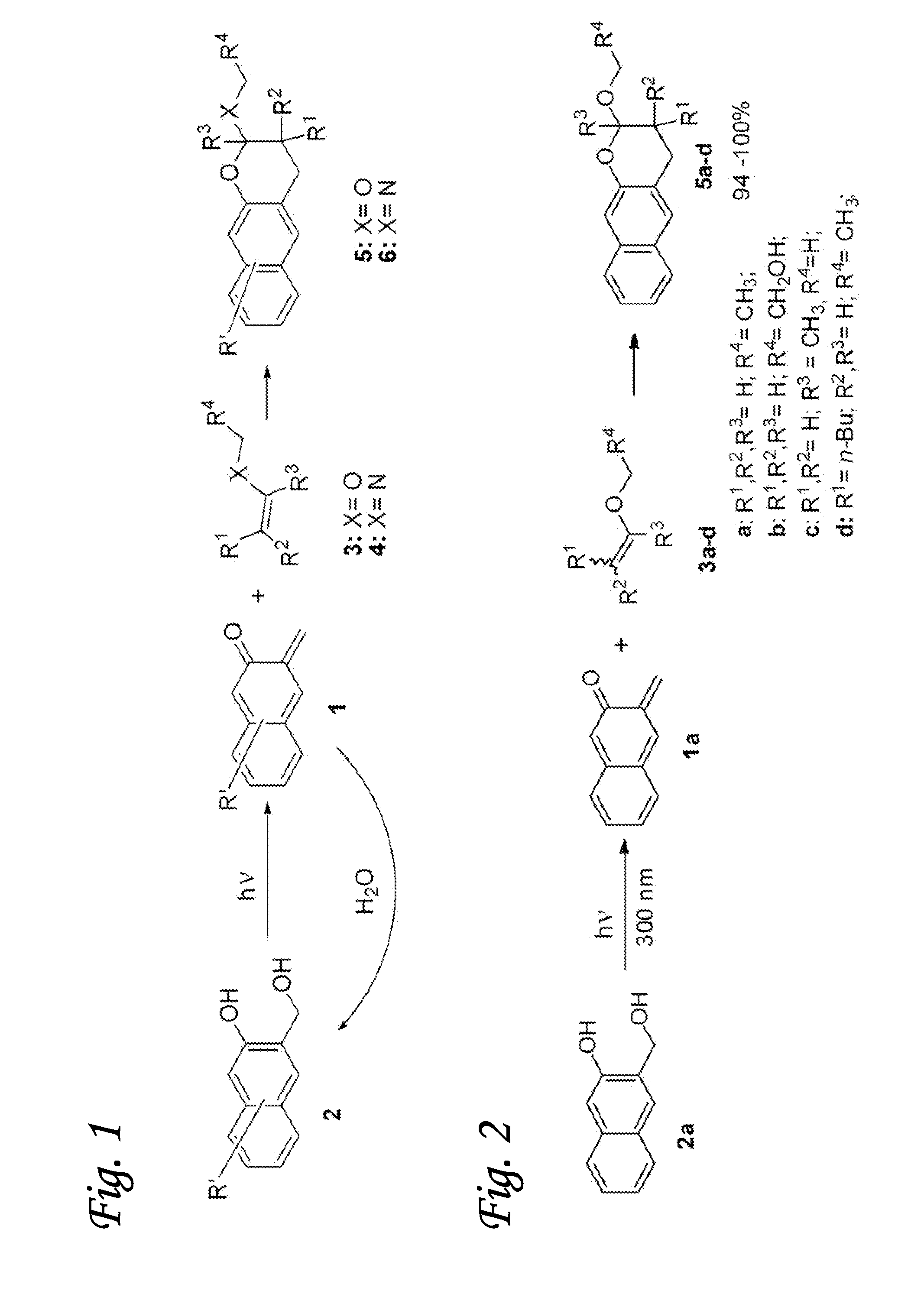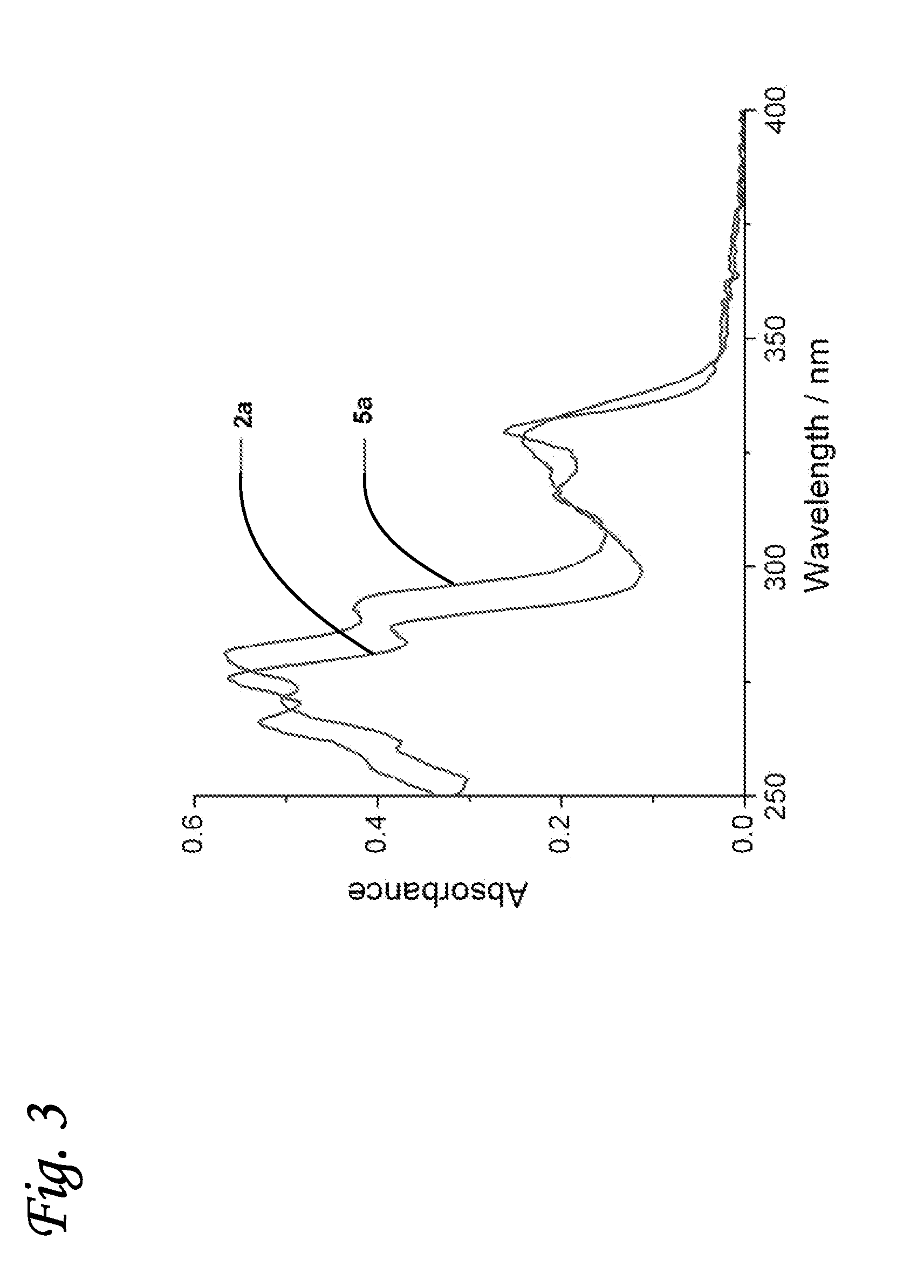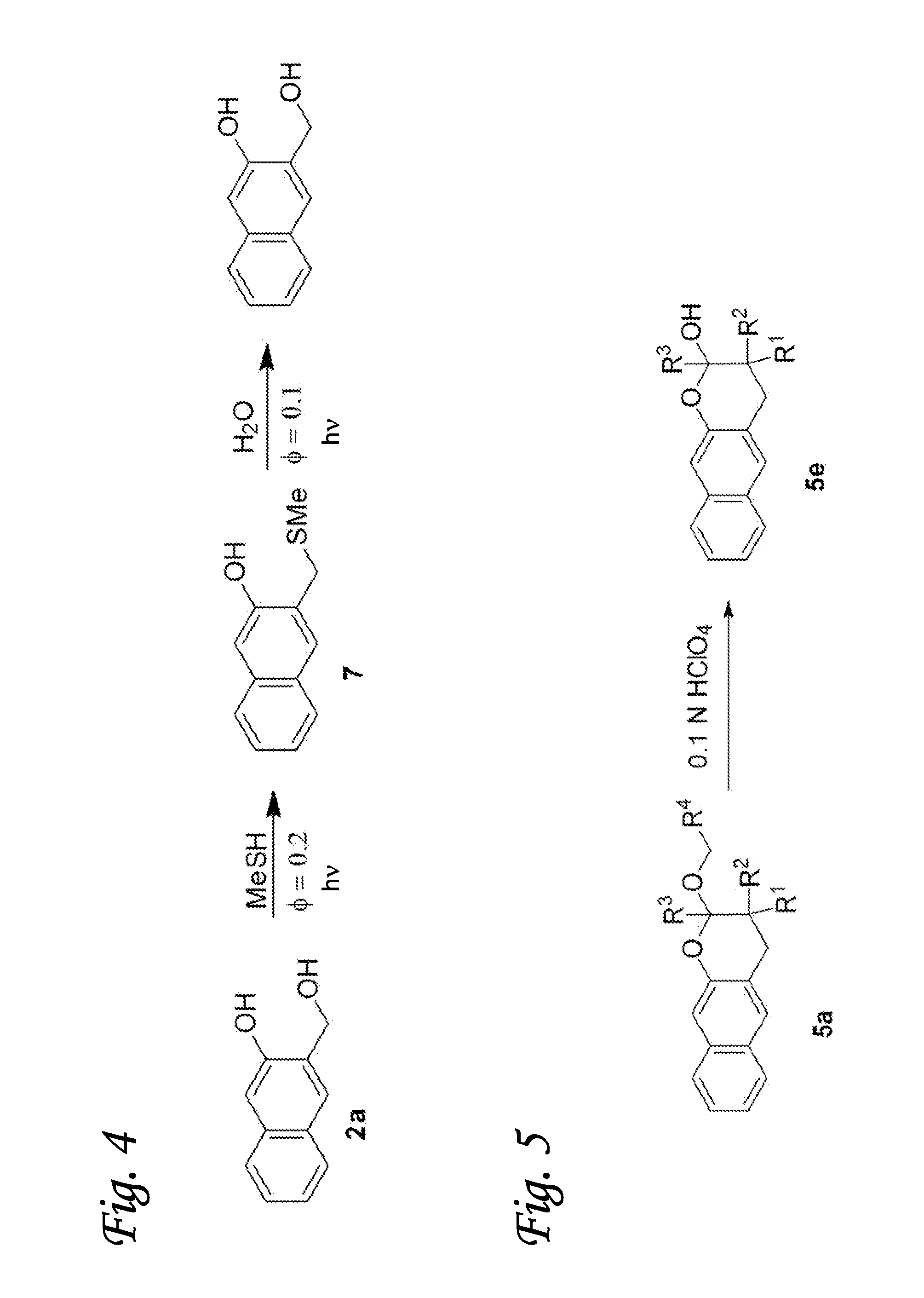Methods for labeling a substrate using a hetero-diels-alder reaction
a technology of heterodielsalder and substrate, which is applied in the field of methods for labeling a substrate using a heterodielsalder reaction, can solve the problems of slow diels-alder cycloaddition reaction and the application of click reaction in living systems, and achieves low cost, high spatial resolution of labeling or ligation, and less light-induced toxicity.
- Summary
- Abstract
- Description
- Claims
- Application Information
AI Technical Summary
Benefits of technology
Problems solved by technology
Method used
Image
Examples
example 1
[0064]The light-induced click reaction for ligation of various molecules is based on the photochemical generation of o-napthoquinone methides in aqueous solution from 3-hydroxy-2-naphthalenemethanol precursor. The naphthyl chromophore allows for the activation using longer wavelength light (300-350 nm) and holds advantage over o-benzoquinone methide precursors such as o-hydroxybenzyl alcohol. Irradiation of 3-hydroxy-2-naphthalenemethanol chromophore (2) results in efficient dehydration of the substrate and the formation of o-naphthoquinone methide (oNQM) 1 (FIG. 1). In the presence of vinyl ethers (3) or enamines (4), oNQMs undergo very rapid Diels-Alder cycloaddition to yield substituted 2-alkoxy-3,4-dihydro-2H-naphtho[2,3-b]pyran (5) or 2-alkylamino-3,4-dihydro-2H-naphtho[2,3-b]pyran (6) as shown in FIG. 1. Various substituents can be introduced in aromatic rings of 2 and in vinyl component (3, 4) to serve as linker to substrates of interest (FIG. 1). In the absence of vinyl ethe...
example 2
[0079]We envisaged that this photo-click reaction can be efficiently employed for the light-directed immobilization (patterning) of various substrates on the surface. For surface derivatization, one can adopt a conventional strategy that requires the oNQM precursor, 3-hydroxy-2-naphthalenemethanol derivative to be attached to the appropriate surface. Flood or patterned irradiation of such derivatized surface in the presence of a vinyl component carrying a payload substrate will result in immobilization of the latter. However, a more attractive from technological point of view immobilization / patterning method consists of the derivatization of the surface with vinyl ether moieties followed by the light directed attachment of substrates containing o-hydroxybenzyl alcohol or 3-hydroxy-2-naphthalenemethanol chromophore. (FIG. 16). Since the life-time of oNQM 1 in aqueous media is below 10 ms, diffusion of the photo-generated oNQM species from the site of irradiation is very limited. An e...
example 3
[0092]General: All organic solvents were dried and freshly distilled before use. Flash chromatography was performed using 40-63 μm silica gel. Solutions for photochemical reaction were prepared using HPLC grade water and acetonitrile. Photoproducts were isolated from preparative scale reaction and were characterized by NMR, GC-MS and HRMS. The isolated pure photoproducts were then used as calibration standards for analytical scale reactions. Both preparative and analytical reactions were carried out using mini-Rayonet photochemical reactor equipped with 8 fluorescent UV lamps (4W, 254, 300, or 350 nm). Reaction mixtures after photolysis were analyzed by HPLC and chemical yields were determined from the calibration plot constructed using known standards of the pure product. Rate measurements were conducted using LKS.60 kinetic spectrometer (Applied Photophysics) equipped with Brilliant B Nd: YAG laser (pulse width=4 ns) fitted with 2nd and 4th harmonic generators. Substrate concentra...
PUM
| Property | Measurement | Unit |
|---|---|---|
| size | aaaaa | aaaaa |
| wavelength | aaaaa | aaaaa |
| wavelengths | aaaaa | aaaaa |
Abstract
Description
Claims
Application Information
 Login to View More
Login to View More - R&D
- Intellectual Property
- Life Sciences
- Materials
- Tech Scout
- Unparalleled Data Quality
- Higher Quality Content
- 60% Fewer Hallucinations
Browse by: Latest US Patents, China's latest patents, Technical Efficacy Thesaurus, Application Domain, Technology Topic, Popular Technical Reports.
© 2025 PatSnap. All rights reserved.Legal|Privacy policy|Modern Slavery Act Transparency Statement|Sitemap|About US| Contact US: help@patsnap.com



